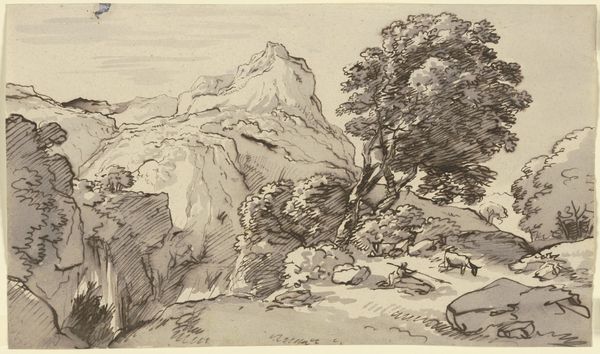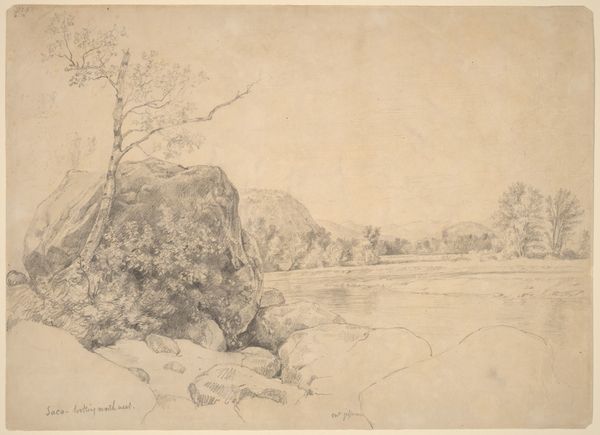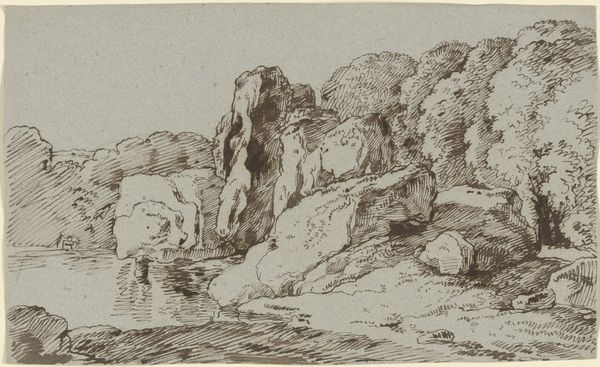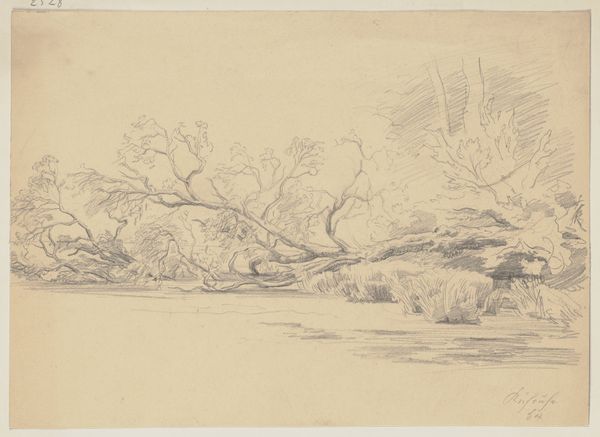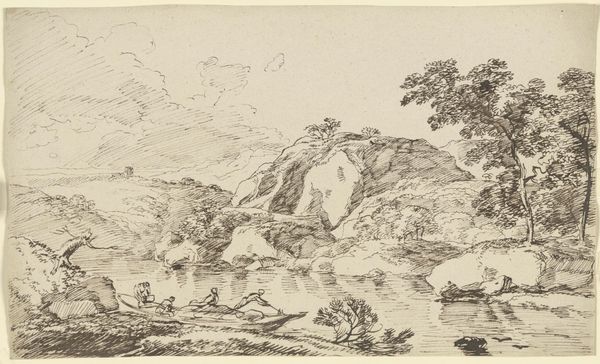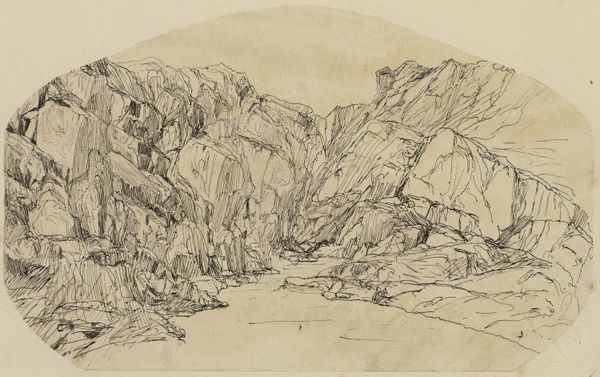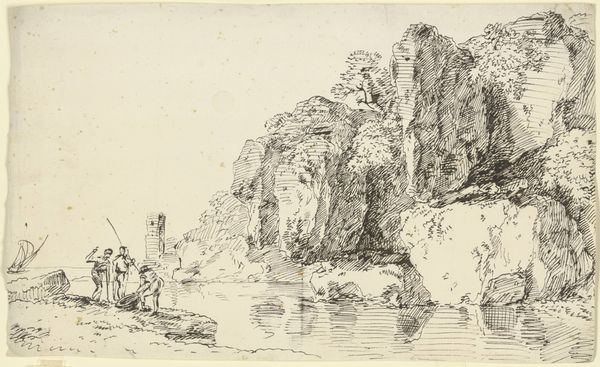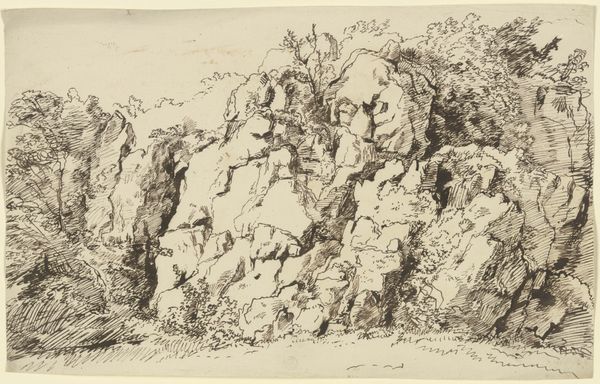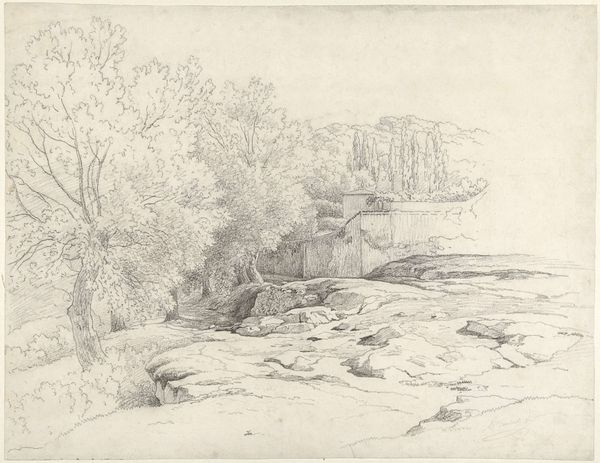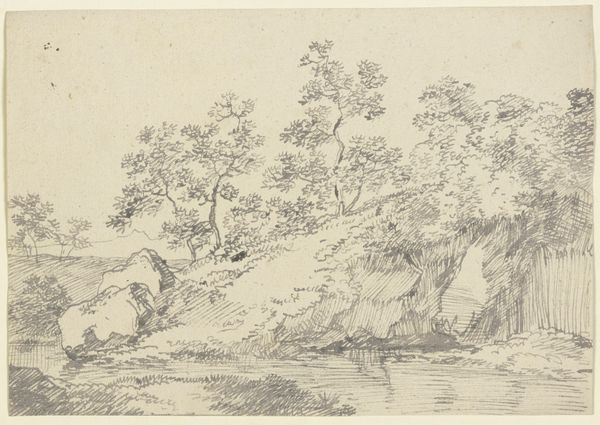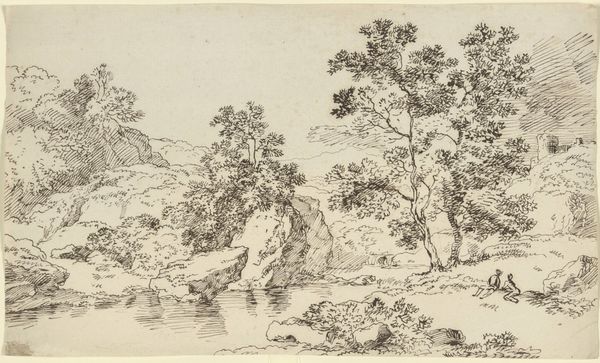![Rocks Along a Lakeshore [recto] by John William Casilear](/_next/image?url=https%3A%2F%2Fd2w8kbdekdi1gv.cloudfront.net%2FeyJidWNrZXQiOiAiYXJ0ZXJhLWltYWdlcy1idWNrZXQiLCAia2V5IjogImFydHdvcmtzL2IzMTlhMWFmLWY4N2MtNDdhMi1iMjk0LWM1NDcyM2VkZmFiMi9iMzE5YTFhZi1mODdjLTQ3YTItYjI5NC1jNTQ3MjNlZGZhYjJfZnVsbC5qcGciLCAiZWRpdHMiOiB7InJlc2l6ZSI6IHsid2lkdGgiOiAxOTIwLCAiaGVpZ2h0IjogMTkyMCwgImZpdCI6ICJpbnNpZGUifX19&w=3840&q=75)
drawing, pencil
#
drawing
#
landscape
#
pencil
#
realism
Dimensions: sheet: 27.9 × 35.5 cm (11 × 14 in.)
Copyright: National Gallery of Art: CC0 1.0
John William Casilear made "Rocks Along a Lakeshore" with graphite on paper. Casilear was part of the Hudson River School, a mid-19th century American art movement that romanticized the American landscape, often reflecting a sense of national identity and expansionist ideology, a concept known as Manifest Destiny. Here, Casilear’s focus on rendering the natural world takes on an ideological dimension. During this period, there was growing concern regarding the impact of industrialization and urbanization. In response, the Hudson River School offered an idealized view of nature as a source of spiritual renewal, framing it as distinctly American. His choice to depict scenes devoid of human presence may be seen as a way to emphasize the untouched wilderness, a narrative of purity that often overlooked the displacement and marginalization of indigenous populations. Casilear’s detailed sketches serve not only as studies of form and light but also as cultural artifacts, reflecting the complex relationship between art, identity, and historical context.
Comments
No comments
Be the first to comment and join the conversation on the ultimate creative platform.
